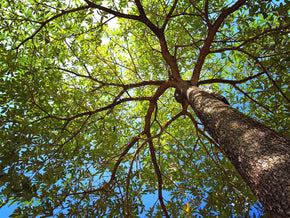If you've ever wandered through a plant nursery and felt confused by terms like full sun, part shade, or filtered light, you're definitely not alone. These labels matter more than we often think—they can mean the difference between a thriving plant and one that struggles to survive. So let’s break down what each sun exposure term really means and how to work with the light you have.
🌞 Full Sun: The Sunshine Seekers
Plants that require full sun need a minimum of 6 hours of direct sunlight each day, often preferring 8 or more. This could be the intense afternoon sun or the softer morning light—either way, they need plenty of it. Full sun areas typically include open spaces like front yards, driveways, or west-facing garden beds.
Some favorites at Sammy’s Plant World that love the sun include the Butterfly Bush, Ixora, and Colorguard Yucca. These plants often produce bold flowers or colorful foliage when they get the light they crave.
👉 Pro tip: Watch your garden during the day. Full sun spots are usually the ones that stay bright from late morning through the afternoon.
🌤️ Part Sun / Part Shade: The Middle Ground
These two can be a bit tricky because they often get used interchangeably—but there's a subtle difference:
-
Part sun means 3 to 6 hours of direct sunlight, preferably in the morning. These plants can handle a bit more heat and light.
-
Part shade also means 3 to 6 hours, but these plants need some protection, like shade during the harsh afternoon hours or dappled light under trees.
Many beloved shrubs like Loropetalum and Azaleas fall into this category. They enjoy a balance of light and shelter, making them perfect for east-facing beds or under taller trees.
🌳 Full Shade: Cool and Protected
Full shade doesn't mean no light at all—it simply means areas that receive less than 3 hours of direct sun, and the rest of the day might offer filtered or indirect light. Shade-loving plants can burn easily if placed in the wrong spot.
Ferns like the Kimberly Queen Fern and Sweet Olive are reliable go-tos for shade gardens. Their lush, green foliage adds texture and cool beauty to shady corners or north-facing areas.
👉 Design tip: Use shade-tolerant plants to soften fences, walls, or darker areas where most plants won’t bloom.
🌱 Matching Plants to Light Conditions
Why is all this important? Because sun needs are one of the top reasons plants fail. A sun-loving flower placed in too much shade might become leggy and refuse to bloom. On the flip side, a shade plant exposed to all-day sun could get scorched and stressed.
Understanding your garden’s light helps you:
-
Save money by buying the right plant for the right spot.
-
Create lush, healthy landscapes without extra maintenance.
-
Make your garden look full and vibrant from season to season.
Not sure what your yard’s light levels are? Try this simple trick: observe your space every 2 hours between sunrise and sunset to see where the sun hits. Take notes, and you’ll get a clearer picture of how much light each spot receives.










